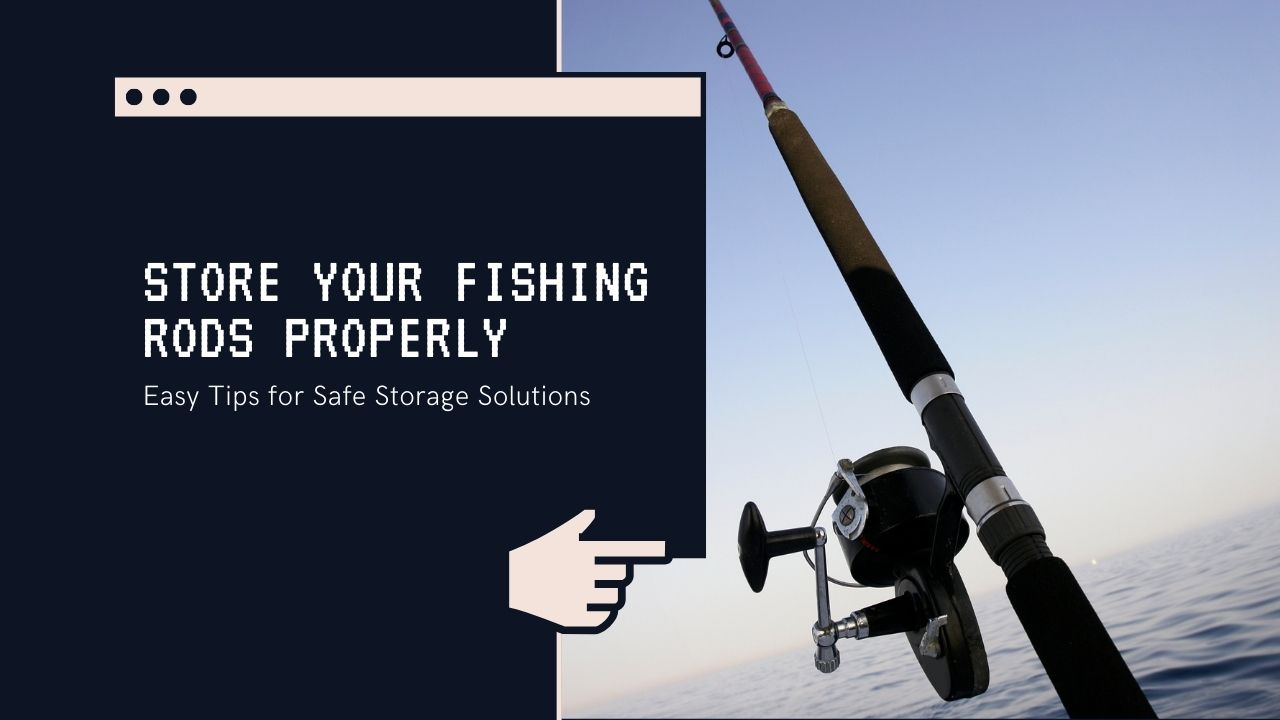Proper storage of your fishing rods is essential to maintain their performance and extend their lifespan. By following the right steps, you can prevent damage, ensure readiness for your next fishing adventure, and protect your investment. This guide provides detailed instructions on how to clean, maintain, and store your fishing rods effectively.
1. Clean Your Fishing Rods After Each Use
Cleaning your fishing rods after every fishing trip is crucial, especially if you’ve been in saltwater environments. Salt and debris can cause corrosion and damage over time.
- Rinse with Freshwater: Gently rinse the rod with fresh water to remove salt, dirt, and debris. Pay special attention to the guides and reel seat.
- Use Mild Soap: For stubborn grime, use a mild soap solution and a soft cloth to clean the rod. Avoid harsh chemicals that could damage the rod’s finish.
- Dry Thoroughly: After cleaning, wipe the rod dry with a clean towel and allow it to air dry completely before storage to prevent moisture-related issues.
2. Inspect for Damage Regularly
Regular inspections help identify potential issues before they become serious problems.
- Check for Cracks or Splinters: Examine the rod blank for any signs of damage that could affect performance.
- Inspect Guides and Tip Tops: Ensure that all guides are intact and free from rust or sharp edges that could fray your line.
- Examine the Reel Seat: Make sure the reel seat is secure and free from corrosion.
3. Remove Reels and Loosen the Drag
Storing rods and reels separately can prevent unnecessary stress on both components.
- Detach the Reel: Removing the reel reduces pressure on the rod and allows for better air circulation, preventing corrosion.
- Loosen the Drag System: Loosening the drag prevents the washers from compressing over time, maintaining the reel’s performance.
4. Choose the Right Storage Location
The environment where you store your fishing rods plays a significant role in their longevity.
- Avoid Extreme Temperatures: Store rods in a location with stable temperatures. Extreme heat or cold can weaken the rod materials.
- Control Humidity: High humidity can lead to mold and corrosion. Use a dehumidifier if necessary to maintain a dry environment.
- Keep Away from Direct Sunlight: Prolonged exposure to UV rays can degrade the rod’s materials. Store rods in a shaded area or use protective covers.
5. Utilize Proper Storage Solutions
Selecting the appropriate storage method prevents physical damage and maintains the rod’s shape.
- Vertical Rod Racks: Storing rods vertically reduces the risk of bending or warping. Ensure the rack supports the rod evenly.
- Horizontal Rod Racks: If vertical space is limited, horizontal racks are suitable. Ensure the rods are supported at multiple points to prevent sagging.
- Protective Rod Sleeves: Using rod sleeves or socks adds an extra layer of protection against dust and accidental impacts.
6. Avoid Storing Rods on the Ground
Placing rods directly on the floor can expose them to potential hazards.
- Prevent Moisture Exposure: Floors, especially in basements or garages, can be damp, leading to corrosion.
- Reduce Physical Damage Risk: Storing rods off the ground prevents them from being stepped on or knocked over.
7. Regular Maintenance During Storage
Even while in storage, periodic maintenance ensures your rods remain in optimal condition.
- Reapply Lubrication: Occasionally lubricate metal components to prevent rust. Use appropriate reel oil for moving parts.
- Check for Pests: Ensure the storage area is free from rodents or insects that could damage your equipment.
- Rotate Rods: If storing multiple rods horizontally, rotate them periodically to prevent any permanent bending.
8. Safe Transportation Practices
Proper handling during transportation prevents damage before storage.
- Use Protective Cases: When traveling, store rods in hard or padded cases to shield them from impacts.
- Secure in Vehicle: Ensure rods are fastened securely in your vehicle to prevent movement and potential breakage.
Conclusion
By following these comprehensive steps, you can ensure that your fishing rods remain in excellent condition, ready for your next fishing adventure. Proper cleaning, regular maintenance, and thoughtful storage practices are key to extending the life and performance of your fishing equipment.
References:











